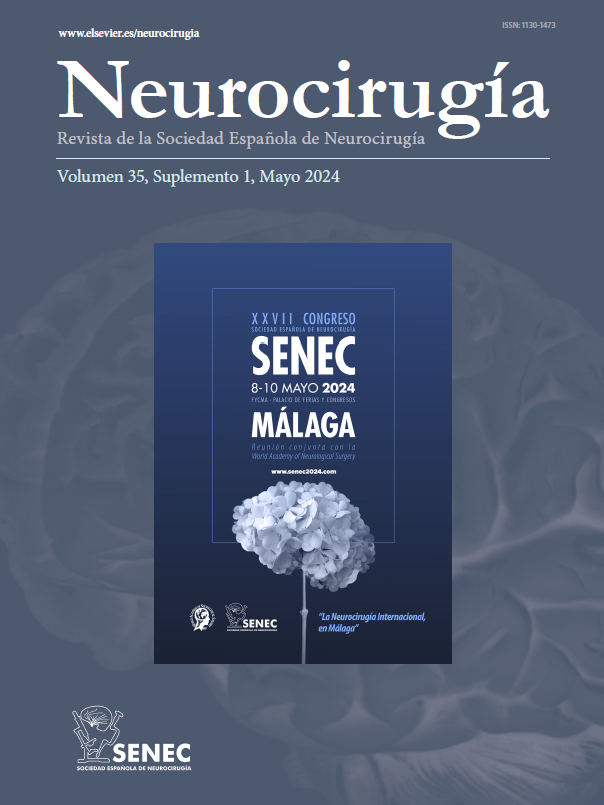V-025 - TRIPLE BYPASS IN THE TREATMENT OF MOYAMOYA DISEASE: SURGICAL TECHNIQUE
Hospital Universitario Virgen del Rocío, Sevilla, Spain.
Introduction: Numerous direct and indirect revascularization techniques have been described in the treatment of Moyamoya disease. Direct bypass increases blood flow in the hypoperfused brain areas immediately and is preferred in adults as they are less likely to develop neoangiogenesis with indirect techniques than children. Different technical variations of direct anastomoses have been described. The main advantage of using more than one donor/recipient is the ability to reperfuse more than one brain territory simultaneously. Using a video, we analyse the advantages and disadvantages of the triple anastomosis with superficial temporal artery and specify all the technical details necessary for its correct execution.
Case report: 24-year-old woman with moyamoya syndrome; cognitive, language and motor disturbance secondary to ischemic events and extensive frontal, parietal and temporal hypoperfusion areas in brain SPECT. After evaluation of all the pertinent tests, direct revascularization with frontal (× 2) and temporal (× 1) branches of the superficial temporal artery to different cerebral territories was established as a treatment strategy. Triple bypass was performed to distal frontal, parietal and temporal m4 branches with evident improvement in intraoperative blood flow. Post-surgical tests show patency of the triple anastomosis, absence of complications and adequate revascularization in different territories. The patient improved quickly and significantly in terms of cognition and language. In the posoperative period she had problems with the surgical wound that required close monitoring.
Discussion: Direct revascularization is the best alternative in most cases of moyamoya disease in adults. Performing multiple anastomoses increases cerebral perfusion in different territories at the same time immediately, although it requires more surgical time, greater skill, and a higher risk of wound-related complications.







